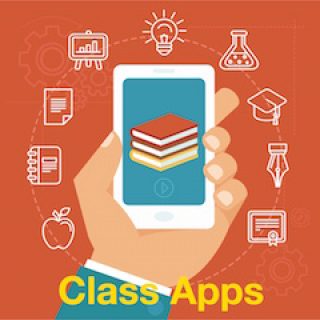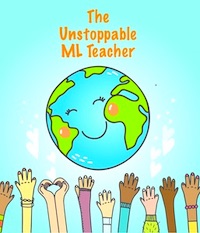Prepping New Teachers to Fully Serve ELLs
A MiddleWeb Blog

In the car, while the rest of us are looking out the window or jamming out to tunes, he’s studying the road atlas, mapping our route, and calculating our arrival time. Each night he can be found at the kitchen table reviewing and updating his planner with upcoming assignments, sports practices, projects, and personal goals.
A few weeks ago, he asked me what my New Year’s resolutions were going to be. I frowned and grumbled something about it not even being December yet. He paused, looked at me, and replied with too much wisdom and seriousness for a teenager:
“Dad…setting goals is the first step to accomplishing them.”
Dad’s resolution: Better prepare new teachers to support ELLs
I currently work with a large number of college students who will formally enter the teaching profession within the next year. Some of them spend a few hours in local classrooms assisting students who need a bit of extra help; others are in full-time internships with veteran mentor teachers.
Whether these soon-to-be teachers are spending an hour or all day with students, the question I hear the most from each of them is: “How can I better support my students who are English language learners?”
It’s an appropriate (and urgent) concern, particularly if we consider the following:
- Currently, English language Learners (ELL’s) constitute 10 percent of the total student population.
- ELLs are the fastest-growing student population in the nation, and it’s estimated that by 2025 one out of four students in classrooms across the country will be an English learner.
- It can take as much as 5-7 years for language learners to develop the language and skills needed for full engagement in academic study in the new language.
- Many teachers feel uncertain, ill-prepared and under-supported as they try to help ELLs succeed in school.
- Educators must cultivate specific knowledge, skills, and pedagogical practices unique to meeting the needs of students whose first language is not English.
In many cases, the skills that teachers are in need of the most are the ones they know least about. That’s why – for the upcoming calendar year – my goal will be to help my new educators be better equipped to meet the needs of their English language learners.

Where do I (we) start?
Over the past several weeks I’ve been trying to consolidate suggestions and strategies for supporting students whose first language is not English from (a) veteran teachers with decades of experience working with ELLs and (b) an ever-evolving body of research related to language acquisition and instructional support of language. The result is a work-in-progress resource collection that…
- helps teachers consider crucial instructional components underscored by research;
- provides a menu/examples of specific strategies/approaches used by teachers in schools.
It is crucial, however, that teachers don’t lump all of their language learners into one group and provide the same generic supports to all, for every task. Instead, the goal should be to examine each student’s individual strengths and anticipated struggles based on the demands of individual tasks.
So far the areas I am trying to address include the following:
►Activating and Building Students’ Background Knowledge
According to Keppler (2016), in order to help students maximize the content, skills, and language of a lesson, teachers must help their students draw on prior knowledge and provide them sufficient front-end experience with a foundational concept from which to build further knowledge and skills.
Strategies for – and examples of – activating/building background knowledge include pre-teaching vocabulary, Realia, anticipation guides, and a number of other approaches that can be found here.
►Comprehensible Input
For students to experience success while acquiring a language, they must be able to understand what they hear or read (Krashen, 2017). To help English Language learners be successful, educators must implement techniques that are designed to improve comprehensibility.
Adjusting teacher talk, learning games, tailoring instruction, and a variety of other strategies that help make content more comprehensible can be found here.
►Helping ELLs Develop Learning Strategies
Despite the language barrier, ELLs can and will learn and excel, given appropriate instruction, support, and assistance. Educators must recognize that as their students are learning English, they must also develop strategies to critically analyze and effectively learn, as all students must do. (Vogt & Eschevarria, 2008).
Strategies and examples of learning strategies such as metacognitive checks, directed reading, sketchnotes, and a variety of other approaches can be found here.
ELLs are our students, too
Though each of my four sons stems from the same genetic pool, they are far from identical in their interests, abilities or struggles. Every single one, however, brings something unique to the table. And each is in our family’s sphere of responsibility.
The same can – and must – be said of our English language learners. Each one has intellectual gifts and acquired skills and possesses a unique experience and perspective. As general education teachers, it’s our task to make each lesson fully accessible and equally challenging academically, and to seek the support we need to help each student build on existing knowledge and develop strategies that allow them to fully engage as learners.
With the new year approaching and our populations of English learners growing, what more important resolution could we make?
(Watch for Part 2 of Curtis Chandler’s post on this topic, in early January.)


































